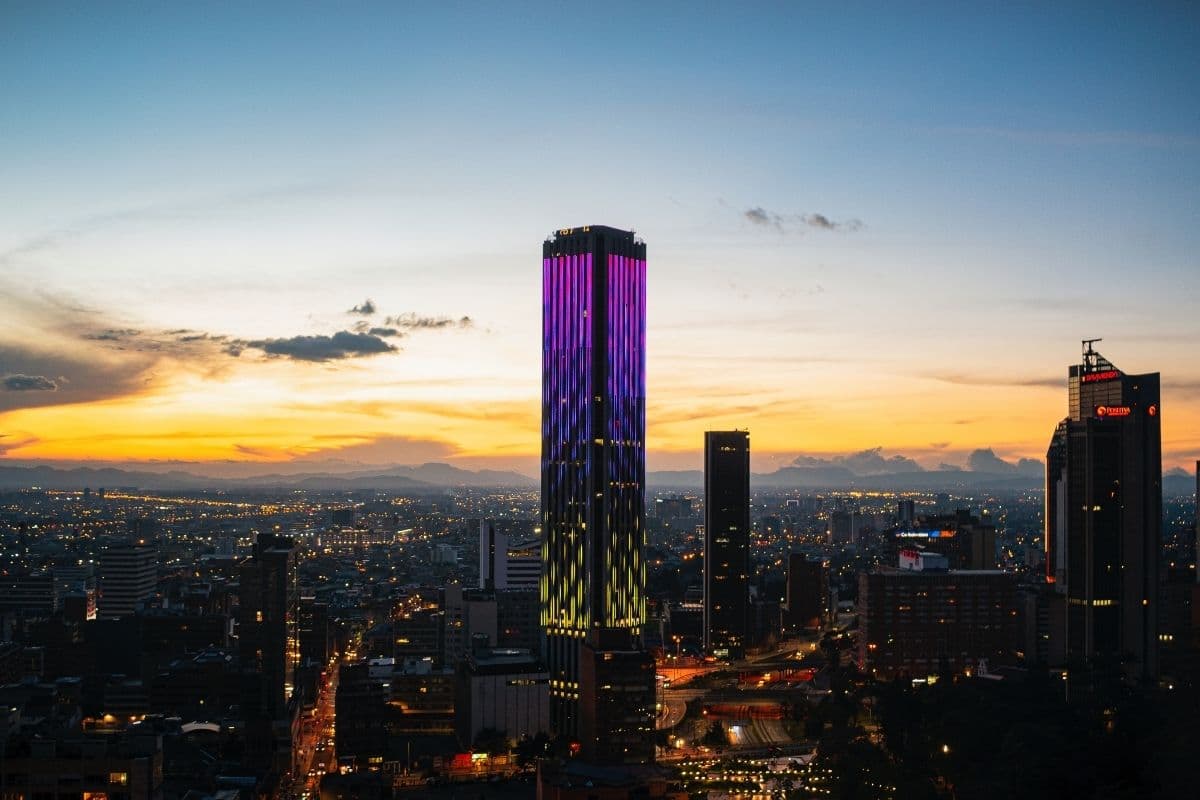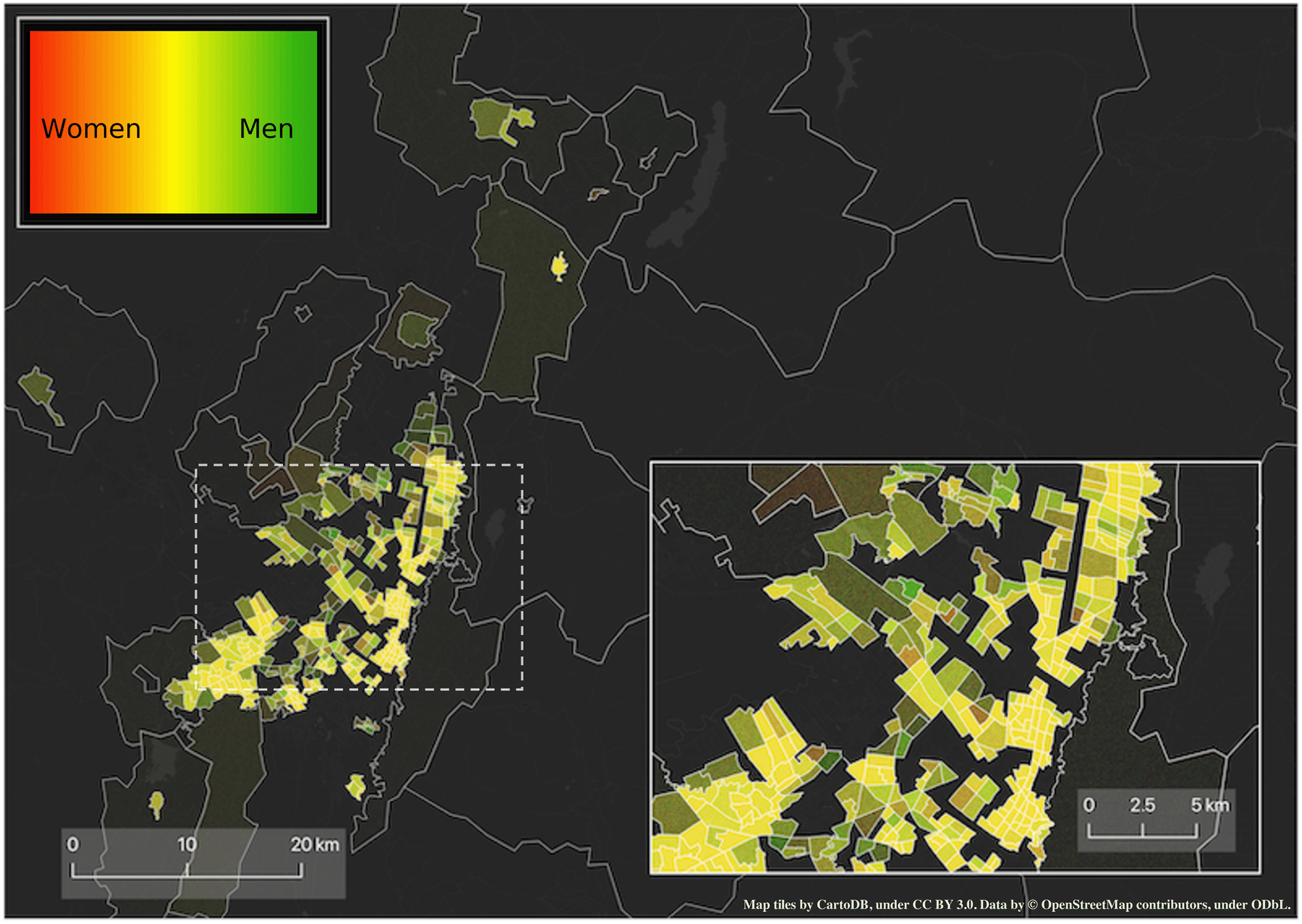
In a new study, researchers mapped the different travel behaviors of men and women and rich and poor. And that reveals major differences.
The way you move around the city says a lot about you. For example, do you go to work every day, meet friends outside the door or do you have to go to the hospital for checkups? There is a good chance that someone else can create a certain image of you just by seeing your travel behavior. In a new analysis, scientists examined the travel behavior of men and women in the Colombian cities of Bogotá and Medellín and the Brazilian metropolis of São Paulo. And that confirms that there are still big differences, not only between rich and poor, but also between men and women.
Study
In the study scientists studied the data from several large-scale travel surveys conducted in the three cities mentioned above. The surveys included questions about which urban areas the participants often traveled to, the purpose of this trip and their socio-economic status. Why this is important to investigate? “It is a widely held belief that people should have fair access to work, education and leisure, regardless of their socio-demographic background,” said researcher Mariana Macedo in conversation with Scientias.nl† “One way to study people’s access to such opportunities is to track their movement patterns.”
Differ
Consistent with previous studies, the new analysis shows that women tend to move in a smaller number of geographic areas than men. “Our work shows that the movement patterns of men and women are not equal,” Macedo says, “even within the same socioeconomic group.” Such differences are proof that women are still not getting the same opportunities. “There’s really no reason to believe that men and women belonging to the same socioeconomic class should move differently,” Macedo explains. “In principle, they should be given the same opportunities. Yet we see a big difference between their movements.”

This image maps work-related movement patterns in the Colombian city of Bogotá. Bright colors represent a higher density of work-related trips. The hue indicates whether for a given zone most trips were made by women (red), men (green) or by both (yellow). Image: Macedo et al., 2022, PLOS ONE, CC-BY 4.0 (https://creativecommons.org/licenses/by/4.0/)
Incidentally, women do not only travel shorter distances in Bogotá, Medellín and São Paulo. “The literature shows that this is true for several cities and countries and in different years,” Macedo underlines.
Factors
According to Macedo, the reasons seem to stem from two factors. “First, women are forced to do more household and care tasks, which means they can’t always afford long commutes,” she says. Second, men are more likely to accept jobs that allow them to earn more, regardless of the commute time involved in such positions. Finally, we should also bear in mind that differences in the labor market in terms of working conditions can attract (or repel) women and men in different ways.”
Social economical status
Moreover, it is not only gender that appears to influence the movement patterns of people within cities. Socio-economic status also plays a role. Rich people, for example, appear to be more selective in their choice of where to travel in metropolitan areas. Middle class people have the most diverse movement patterns, while people of lower socioeconomic status move relatively little in comparison – possibly due to a lack of affordable transport.
Causes
What else could be the underlying causes? “In São Paulo we can imagine two scenarios,” says Macedo when asked. “Wealthy people can afford to live in the expensive inner city, for example, while the middle class and poor people usually cannot, or at least to a lesser extent. On the other hand, rich people can also choose to live further from the city center because they prefer to live in quiet, rich and exclusive neighborhoods, for example. It is true that they live further away from the center, but at the same time they can also afford to travel longer. Anyway; both scenarios are linked to the ‘freedom’ of rich people to decide where they want to live and how much they travel. The same freedom does not exist for people who belong to the lower and middle incomes. For the lower income groups in São Paulo, living outside the city center is not a choice, but the only option.”
gender differences
Yet within each socioeconomic group, men consistently travel more and further than women. The gap is most pronounced for the upper class; possibly because of greater gender inequality in certain professional fields, affecting commuting. “Socioeconomic status appears to significantly amplify underlying gender differences,” Macedo said.
Displacement Patterns
The study leads to a unambiguous conclusion: “our work shows how different socio-demographic characteristics (gender and socioeconomic status) together/simultaneously influence people’s movement patterns,” Macedo summarizes. “In particular, we emphasize how socioeconomic status reinforces gender differences in exercise patterns. This shows that if only one aspect is taken into account, it is not fully representative of the whole picture. Our findings resonate with the idea that ‘the system is more than just the sum of its parts’, which is an important characteristic of complex systems.”
The researchers note that the patterns they observed don’t necessarily hold true for other cities. So further research is already in the offing. In future studies, the team hopes not only to study other cities, but also to include additional factors, such as the age and occupation of the traveler. “We are currently trying to expand our work by collecting data from other countries and cities,” says Macedo. “Then we can also assess whether the observed patterns are more universal (or not) than those in Colombia and Brazil.”
Source material:
†Gender, socioeconomic status influence people’s patterns of movement within cities†
Interview with Mariana Macedo
Image at the top of this article: Santiago Boada via Pexels